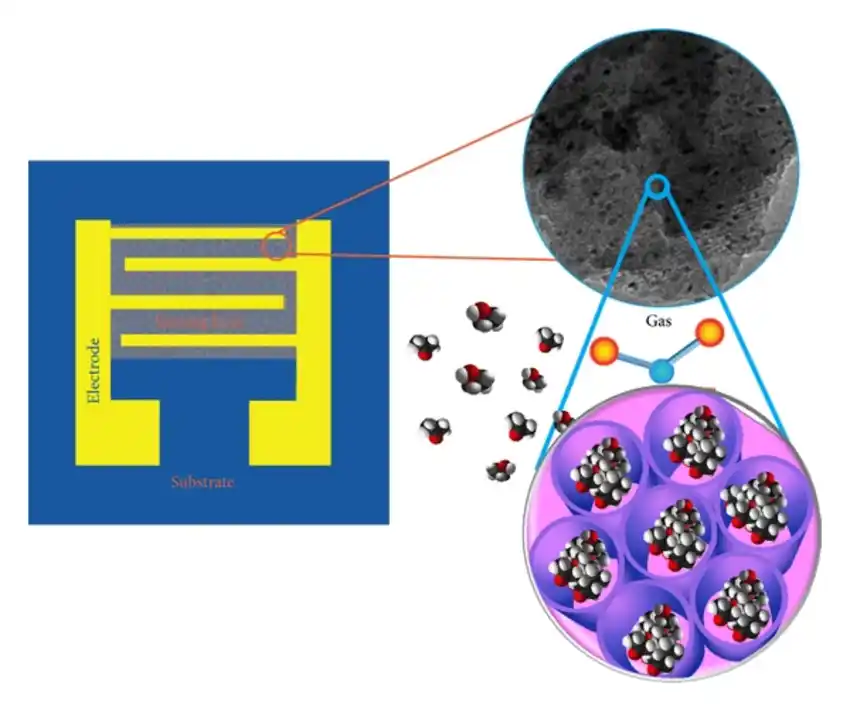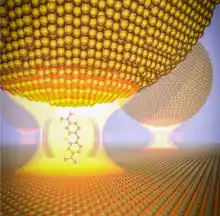افشین رشید
اُستادیار ؛ عضو هیات علمی دانشگاه آزاد اسلامی واحد علوم و تحقیقات تهران
618 یادداشت منتشر شدهGas Nanosensors Based on Carbon Nanomaterials

Note: In these nano sensors, carbon black is dispersed in an insulating polymer, and with this, the electrical conductivity of the film is ensured. In the presence of the desired gas/steam , the polymer swells and finally the electrical conductivity/resistance of the polymer undergoes a change. By using a suitable solvent, the viscosity of the polymer/carbon black is adjusted in a favorable way and then, this polymer is patterned on the surface of the smooth electrode.
To place the polymer on the surface of the electrodes, various methods are applied, such as spin coating and drop coating, and finally the coating is dried. Changes in electrical conductivity in gas nanosensors are based on the percentage of carbon black.

Various properties of carbon nanomaterials, such as optical and electrical properties, have led to the use of these materials for making sensors. Gas nanosensors that change the electric current passing through them due to the presence of the target substance. If the amount of carbon black in the nano sensor is low, the composite will be insulated, the reason for this is the lack of connection between conductive particles in the composite body. By increasing the amount of carbon black in the polymer, the electrical resistance of the polymer decreases exponentially. By increasing the concentration of carbon black and reaching the transfer point, the connection is established based on the penetration limit. In case of presence of vapor/gas, the polymer swells and the electrical conductivity/resistance value changes, this change is used to identify the gas. In gas nanosensors with carbon nanomaterials and electrical conductivity based on carbon black, electrical resistance signals are output from these arrays and evaluated using a standard system. And the goal is to be able to identify the presence of various vapors of organic solvents. This strategy can be combined with different software and hardware systems, and finally, polymer/carbon composite sensors may experience delays in responding to external stimuli due to the aging of the polymer matrix or the change in the location of the carbon black particles . Changing the location of the particles or the aging of the matrix causes a change in the penetration path. This change in arrangement occurs as a result of repeated swelling and wrinkling of the polymer matrix due to repeated use of the sensor.
Conclusion:
In these nano sensors, carbon black is dispersed in an insulating polymer, and with this, the electrical conductivity of the film is ensured. In the presence of the desired gas/steam , the polymer swells and finally the electrical conductivity/resistance of the polymer undergoes a change.